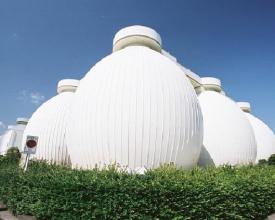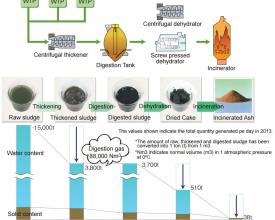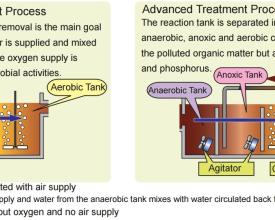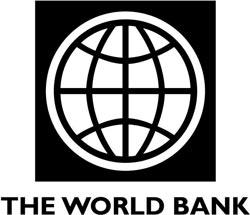
Gestion durable des eaux usées
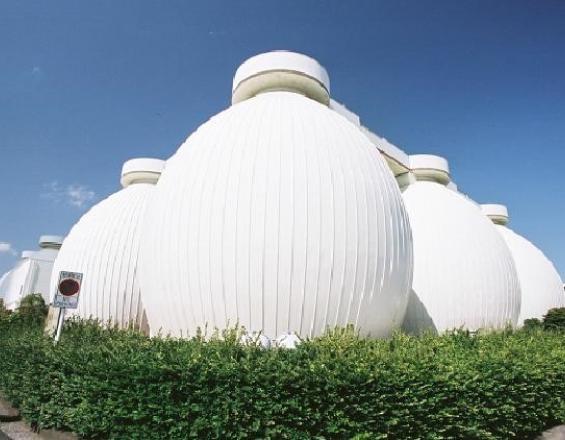
Le réseau d'égouts de la ville de Yokohama couvre presque entièrement son vaste territoire de plus de 3,5 millions d'habitants. La longueur totale des conduites d'égout est d'environ 11 000 km, ce qui équivaut à la distance entre la ville de Yokohama et la ville de New York, aux États-Unis. Les 11 stations d'épuration de la ville, construites entre 1962 et 1984, traitent quotidiennement environ 1 500 000 m3 d'eaux usées. Le système d'assainissement a relevé les défis de la durabilité en matière d'efficacité des ressources, de réduction des émissions de gaz à effet de serre (GES) et de réduction des risques d'inondation dans le contexte d'une société vieillissante et d'une résilience nationale. Il a également adopté des technologies de traitement avancées afin d'améliorer les conditions sanitaires et la qualité de l'eau des rivières et des ruisseaux.
Contexte
Défis à relever
Le système d'assainissement est confronté à plusieurs défis en termes de durabilité du service. Tout d'abord, la ville doit moderniser une grande partie de ses infrastructures d'assainissement au cours des 30 prochaines années, car la plupart d'entre elles ont été construites il y a plus de 20 ans. Le vieillissement des canalisations et des infrastructures n'affecte pas seulement directement la qualité du service d'assainissement, mais il expose également la vie quotidienne et les activités socio-économiques de la ville à des dangers, tels que des effondrements de chaussée dus à l'endommagement des canalisations, qu'il convient de prévenir. Deuxièmement, la ville cherche à mettre en place un système d'assainissement durable sur le plan environnemental. Par exemple, bien que le système couvre entièrement la zone de la ville, l'eutrophisation des plans d'eau fermés persiste. En outre, la grande quantité de boues générées chaque jour dans les stations d'épuration représente environ 20 % du total des déchets industriels.
Emplacement
Traiter
Résumé du processus
Le financement durable est l'un des plus grands défis auxquels le système d'assainissement est confronté dans le contexte d'une société vieillissante. Pour réduire le coût total, un ensemble d'installations doit être géré de manière systématique. Non seulement le recyclage de l'eau et des boues traitées contribue à la préservation de l'environnement, mais il permet également de récupérer les coûts d'entretien et de renouvellement du système d'assainissement. L'application de technologies avancées permet également d'améliorer la qualité de l'eau traitée, ainsi que la récupération des ressources et la production d'électricité.
Blocs de construction
Schémas financiers pour une gestion durable des eaux usées
Pour faire face au vieillissement des systèmes d'égouts, un plan de renouvellement a été systématiquement développé et exécuté en tenant pleinement compte du plan budgétaire. La zone où un système d'égouts a été construit avant la Seconde Guerre mondiale a été désignée comme la première phase de rénovation, suivie d'une deuxième phase de rénovation où un système d'égouts a été construit entre 1945 et 1970. Pour garantir le budget de rénovation de l'infrastructure d'égouts et continuer à fournir des services de qualité, il était nécessaire d'améliorer les conditions financières. Par exemple, un objectif a été fixé pour réduire le taux de dépendance à l'égard des obligations d'entreprise afin d'améliorer la base financière des services d'assainissement. En outre, la PFI a été introduite pour réduire le coût du recyclage des boues. La gestion quotidienne des systèmes a été renforcée afin de prolonger la durée de vie des installations et des canalisations, et une base de données et d'informations sur les systèmes d'assainissement est en cours de développement.
Facteurs favorables
- Plans systématiques de rénovation des infrastructures qui se détériorent
- Mécanisme financier pour la récupération des ressources
- Développement d'une base de données et d'informations sur les systèmes d'assainissement
Leçon apprise
Le financement durable est l'un des plus grands défis auxquels le système d'assainissement est confronté dans le contexte d'une société vieillissante. La surveillance et l'entretien régulier des installations permettent de prolonger la durée de vie des installations d'assainissement. Cela permet de réduire le coût total du cycle de vie du système à long terme. En outre, les systèmes financiers fondés sur la récupération des ressources et la coopération public-privé permettent de récupérer les coûts d'investissement et de gestion.
Utilisation de l'eau recyclée
Les eaux usées traitées sont utilisées à diverses fins dans la ville. Trois stations d'épuration des eaux usées ozonisent l'eau traitée, tandis que toutes les stations disposent d'installations pour filtrer les eaux usées avec du sable. L'eau ozonisée est utilisée pour les toilettes, les petits cours d'eau artificiels et les systèmes de climatisation. L'eau filtrée par le sable est récupérée pour nettoyer les stations d'épuration et les toilettes. Les eaux usées traitées génèrent des revenus en étant vendues pour nettoyer les tuyaux de drainage et les usines de construction. La qualité de l'eau récupérée est conforme aux normes définies par le gouvernement national pour les différents usages.
Facteurs favorables
- Technologies permettant d'épurer les eaux usées et de les utiliser à diverses fins
- Marchés matures pour l'eau recyclée
Leçon apprise
L'eau devenant une ressource de plus en plus précieuse, l'eau recyclée prend également de la valeur. Une fois traitées au moyen de mesures appropriées, les eaux usées recyclées peuvent constituer une ressource utile en diverses occasions. En outre, les revenus générés par la vente d'eau recyclée à des opérateurs privés peuvent être réinvestis pour améliorer ou réhabiliter les stations d'épuration et les installations d'assainissement en vue d'une gestion durable.
Utilisation des ressources générées par le traitement des boues
Les boues générées par le processus de traitement des eaux usées sont également recyclées dans la ville de Yokohama. Les boues produites dans onze stations d'épuration sont transportées vers deux stations de traitement des boues, puis soumises à des processus d'épaississement, de digestion et de déshydratation. Après le traitement, le poids des boues diminue de 400 fois et elles deviennent un produit inodore et hygiénique. Le gaz généré pendant le processus de digestion est récupéré comme source d'énergie et utilisé pour la production d'électricité et de combustible pour l'incinération dans les stations d'épuration. En outre, les cendres après incinération ont été utilisées comme matière première pour améliorer les sols et le ciment.
Facteurs favorables
- Technologies d'utilisation des boues traitées
Leçon apprise
Les stations d'épuration produisent une quantité importante de boues, qui représentent environ 20 % de l'ensemble des déchets industriels au Japon. La mise en décharge conventionnelle de ce sous-produit a entraîné un manque d'espace dans les sites d'élimination et une pollution de l'environnement. Les autorités locales et les organismes de gestion des eaux usées peuvent réduire le volume important de l'élimination finale en traitant prudemment les boues et en les recyclant en engrais pour les terres agricoles, en matériaux de construction et en source d'énergie.
Procédé de traitement avancé pour améliorer la qualité de l'eau
Le système d'assainissement a contribué à l'amélioration de la qualité de l'eau publique. Le taux de couverture des eaux usées est passé de 85 % en 1989 à 99,8 % en 2013. Aucune eau usée non traitée ne s'écoule dans les rivières, et la qualité de l'eau des rivières s'est considérablement améliorée. Les valeurs de DBO dans les principales rivières de la ville ont diminué de 40 à 87 % en 2013 par rapport à celles de 1984. En revanche, l'eutrophisation des plans d'eau fermés tels que les lacs et les eaux côtières persiste. Pour faire face à ce problème, la ville de Yokohama a introduit une technologie de traitement avancée pour éliminer le nitrate et le phosphore qui contribuent à l'eutrophisation. Le nombre de stations d'épuration appliquant un processus de traitement avancé est passé de deux en 1996 à huit en 2013, ce qui a permis d'augmenter le taux d'élimination de l'azote et du phosphore.
Facteurs favorables
- Technologie de traitement avancée pour éliminer l'azote et le phosphore des eaux usées
Leçon apprise
Les stations d'épuration n'éliminent pas entièrement les substances nocives des eaux usées. Les restes de nitrates et de phosphore dans l'eau traitée contribuent à l'eutrophisation, en particulier lorsqu'ils sont rejetés dans des masses d'eau fermées. Pour préserver la richesse de l'environnement aquatique, toutes les eaux usées doivent être traitées par des moyens collectifs ou individuels avant d'être rejetées dans les masses d'eau. En outre, l'application de technologies efficaces et la surveillance continue sont essentielles pour améliorer la qualité de l'eau.
Impacts
Impact économique : la ville s'efforce de réduire sa forte dépendance à l'égard des obligations d'entreprises, et un nouvel objectif fixé pour le plan à moyen terme actuel vise à améliorer encore la situation financière de la ville en matière de gestion des eaux usées, comme les mesures de récupération des ressources pour réduire le coût du traitement et augmenter les recettes par la vente de matériaux recyclés, la participation du secteur privé à la gestion des eaux usées pour réduire les coûts, et l'exportation de l'expérience et de la technologie du système d'assainissement de Yokohama (par exemple, la technologie de traitement des eaux usées à la ville de Batam en Indonésie dans le cadre d'un projet de l'Agence japonaise de coopération internationale). technologie de traitement des eaux usées à la ville de Batam en Indonésie dans le cadre d'un projet de l'Agence japonaise de coopération internationale).
Impact social : le système d'égouts de Yokohama contribue à l'amélioration de l'assainissement de la ville. En outre, les petits cours d'eau où l'on utilise de l'eau recyclée ozonisée constituent un excellent front de mer et un espace de loisirs pour les citoyens. Les efforts déployés pour assurer la durabilité des systèmes d'assainissement contribuent à atténuer les inondations en cas de crue.
Impact environnemental : la qualité de l'eau des rivières, des ruisseaux et des eaux côtières de Yokohama s'est améliorée grâce à son système d'assainissement. L'amélioration de la qualité de l'eau s'est également traduite par une augmentation de la diversité des poissons dans les principales rivières. Des études ont montré que des poissons tels que le killifish, le saumon et les vairons d'eau douce sont revenus. Environ 20 % des émissions de gaz à effet de serre provenant des entreprises et des services exploités par la ville de Yokohama proviennent de la gestion des eaux usées.
Bénéficiaires
- Résidents de la ville de Yokohama
- Entreprises privées de la ville de Yokohama
